SOURCE: AFI

Turkey is reportedly planning to procure 100 F404 engines from GE Aerospace to power its new Hurjet light fighter jet. The move highlights Turkey’s efforts to bolster its domestic aerospace capabilities while securing advanced propulsion technology for its indigenous aircraft programs. Additionally, Turkey has also requested that the more powerful F110 engines be manufactured domestically to meet its growing defence needs.
The Hurjet, which uses an F404-GE-102 afterburning turbofan engine generating 78 kN of thrust, is Turkey’s ambitious light fighter and advanced jet trainer project. The aircraft is expected to serve both training and combat roles, with the F404 engine at its core. This engine choice aligns with global trends for light fighter jets, but the large procurement of 100 units shows Turkey’s determination to accelerate the program and ensure reliable engine supply.
Continue readingSOURCE: AFI

The Indian Navy’s second ballistic missile submarine (SSBN), INS Arighat, has recently become operational with the K-4 submarine-launched ballistic missile (SLBM), according to DRDO officials. This significant development marks a major milestone for India’s nuclear deterrence capabilities.
The K-4 SLBM, with a range of 3500 kilometres, is a highly accurate weapon system capable of achieving a “near zero circular error probability.” DRDO officials in past have told idrw.org and have asserted that the K-4’s accuracy surpasses that of Chinese missiles, providing India with a strategic advantage.
Continue readingSOURCE: AFI
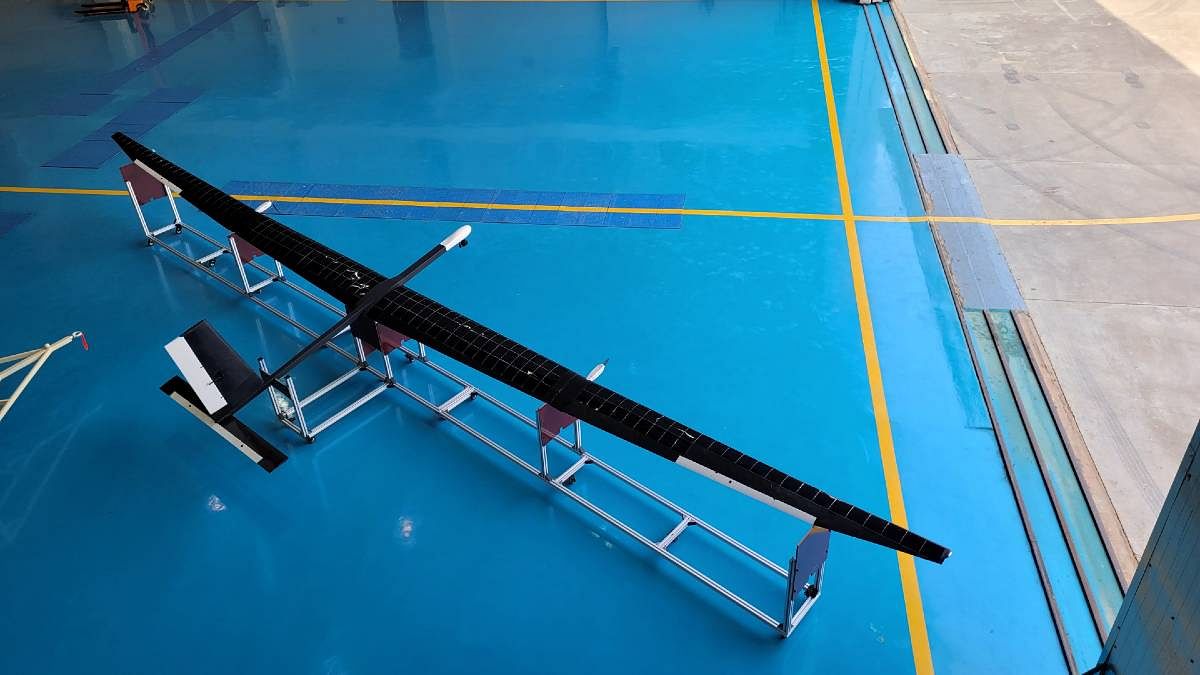
The National Aerospace Laboratories (NAL), based in Bengaluru, has developed an innovative High-Altitude Platform (HAP)—an advanced system designed for long-duration surveillance and reconnaissance. This state-of-the-art platform represents a significant leap in India’s aerospace capabilities, providing an economical and highly effective alternative to traditional satellites and unmanned aerial vehicles (UAVs) for continuous monitoring of enemy territories.
One of the most remarkable aspects of NAL’s HAP is its ability to remain operational for extended periods. The aircraft is designed for 90 days of continuous operation, depending on atmospheric conditions and the efficiency of its onboard systems. This endurance allows for prolonged, uninterrupted monitoring, offering a continuous eye in the sky over strategically important areas.
Continue readingSOURCE: AFI
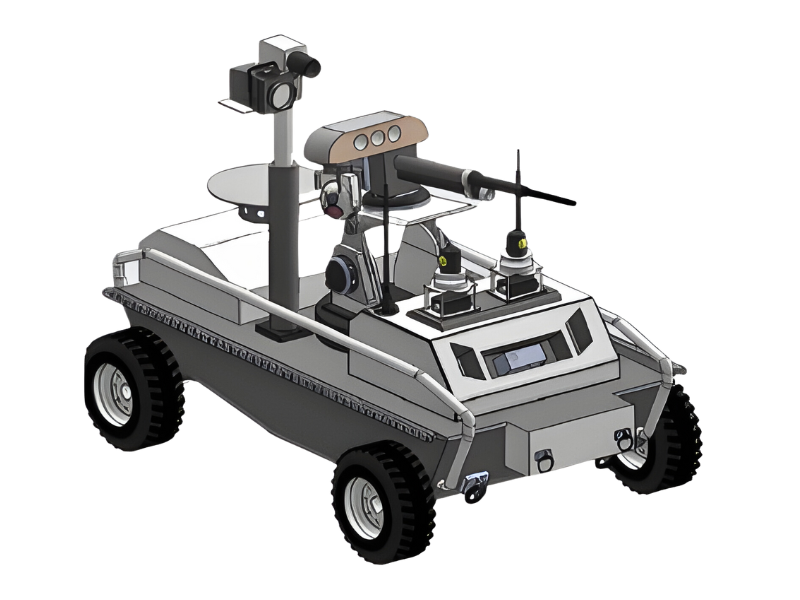
Vasai-based start-up JanyuTech has taken a significant leap in robotics by developing the Varaha QRS (Quality Robotic System)—an advanced, four-legged robot tailored for military and industrial applications. Designed with cutting-edge technology, the Varaha quadrupedal robot is a versatile machine that offers unparalleled mobility, safety, and defense-grade reliability, making it a game-changer for operations in unstructured and harsh terrains.
The Varaha QRS robot boasts an innovative design that ensures seamless mobility across various terrains. Its quadrupedal structure allows it to maintain stability while moving, making it effective even in rugged environments. By lifting one leg at a time, the robot achieves a tripod configuration, ensuring a lower center of gravity and superior balance.
Continue readingSOURCE: IDRW.ORG
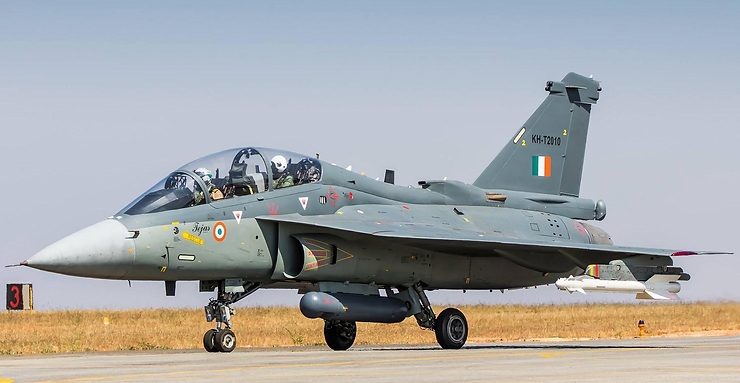
Hindustan Aeronautics Limited (HAL), India’s state-owned aircraft manufacturer, is set to complete the delivery of the last four light combat aircraft (LCA Mk-1) trainers to the Indian Air Force (IAF) by March 31, 2025. These twin-seater jets will play a crucial role in training IAF pilots and can also be used as fighters if needed.
HAL has already delivered four LCA Mk-1 trainers to the IAF, utilizing stock engines from the Air Force. However, the delivery of the remaining four trainers will be done by March 31, 2025. but the delivery of 10 more from the second batch of Tejas Trainer might face some delays due to issues with the supply of F-404 engines from GE Aerospace. Due to delays, deliveries are expected to occur in the first and second quarters of 2025.
Continue readingSOURCE: IDRW.ORG
The Indian Army is set to modernize and export its older T-72 tanks, which have served as its main battle tank for decades. A senior defense official revealed to Sputnik India that these tanks will be upgraded domestically and then offered to foreign buyers.
India currently possesses around 2,500 T-72 tanks, which were first introduced into its army in the 1970s. Despite their age, these tanks are still considered highly reliable and continue to be in demand globally. Countries in Africa, the Middle East, and Far East Asia have expressed interest in acquiring the T-72, even as India prepares to phase them out of its forces.
Continue readingSOURCE: AFI
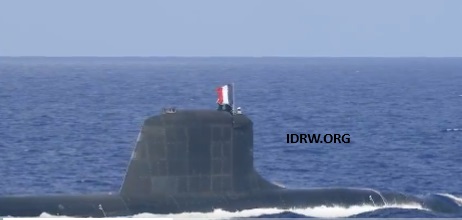
Varuna 2024, a joint naval exercise between India and France, has concluded with a strong focus on anti-submarine warfare (ASW). The exercise, which took place in the in the Mediterranean Sea, showcased the interoperability and capabilities of the two navies in countering underwater threats.
The French nuclear-powered attack submarine (SSN) Suffren played a pivotal role in the ASW drills. The Suffren, a highly advanced submarine equipped with cutting-edge technology, demonstrated its stealth and maneuverability in challenging underwater environments.
Continue readingSOURCE: AFI

Artemon Aerospace, a leading aerospace technology company, has successfully conducted ground launch testing of its Canister-Launched Loitering Munition. The test, which utilized a recycled in-service canister launcher, marks a significant milestone in the development and refinement of this innovative weapon system.
The canister-launched loitering munition, a highly versatile and effective weapon, offers a range of capabilities including long-endurance flight, precision targeting, and the ability to loiter over a target area for extended periods. Its compact design and compatibility with existing canister launchers make it a valuable asset for military forces.
Continue readingSOURCE: AFI
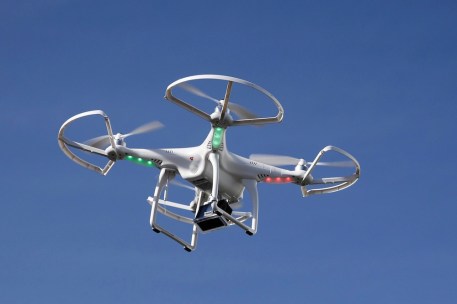
Intelligence agencies have raised red flags over the use of Chinese components, including electrical components, in drones purchased by the Indian armed forces from domestic private players. These drones, deployed primarily in border areas in the northern and eastern sectors, pose a significant security concern due to the potential for data transfer.
In response to these concerns, the Ministry of Defense (MoD) has halted an order placed by the Army for logistics drones that were intended for deployment along India’s borders with China. Senior Army officers have confirmed that the force, in collaboration with the defense ministry, is currently developing a comprehensive strategy to prevent the inclusion of Chinese components in military drones.
Continue readingSOURCE: RAUNAK KUNDE / NEWS BEAT / IDRW.ORG

The Egyptian Air Force recently explored options for modernizing its fleet of light fighter jets, which could include a visit to India’s Hindustan Aeronautics Limited (HAL) to assess the LCA Tejas Mk1A. However, Egypt’s decision is complicated by stiff competition from Turkey’s Turkish Aerospace Industries (TAI), which is offering its newly developed Hürjet jet trainer and light attack aircraft as a strong contender.
The LCA Tejas Mk1A is India’s domestically designed, single-engine, multirole light fighter aircraft. Known for its agility, advanced avionics, and operational versatility, the Tejas Mk1A has been a flagship program for HAL and a symbol of India’s growing defense manufacturing capabilities. Recently, HAL has made efforts to position the Tejas Mk1A in the international market, targeting countries looking to modernize their aging fleets with a cost-effective, yet capable platform.
Continue readingSOURCE: RAUNAK KUNDE / NEWS BEAT / IDRW.ORG

The Defence Electronics Application Laboratory (DEAL) has embarked on a significant project titled “SDR for LCA Mk-II Aircraft”, aiming to develop Software Defined Radio (SDR) and Mobile Ad-Hoc Networking (MANET) waveforms for advanced communication in India’s Light Combat Aircraft (LCA) Mk-II program. This initiative addresses the growing demand for more robust, secure, and adaptive communication systems, capable of seamless operations in various mission-critical environments, from air-to-air and air-to-ground to direct ground communications.
As modern warfare becomes increasingly dependent on real-time data and communications, traditional communication systems struggle to meet the evolving requirements. The Indian Air Force (IAF), through the Aeronautical Development Agency (ADA), has outlined the need for a versatile communication system that integrates multiple platforms, operates across different frequency bands, and ensures secure, real-time information sharing during missions.
Continue readingSOURCE: RAUNAK KUNDE / NEWS BEAT / IDRW.ORG

India’s Kalyani Group is actively exploring ways to expand its armoured vehicle business in India, following the successful introduction of its India-specific modified M4 armoured vehicles. The M4, based on the Mbombe 4 built by South Africa’s Paramount Group, has garnered significant purchases by the Indian Army.
Both companies are now considering possibly manufacturing the enhanced variant of the Mbombe 6 Mark 3, in India. The Mbombe 6 is a highly agile 6×6 infantry fighting vehicle that offers exceptional performance and protection.
Continue readingSOURCE: AFI
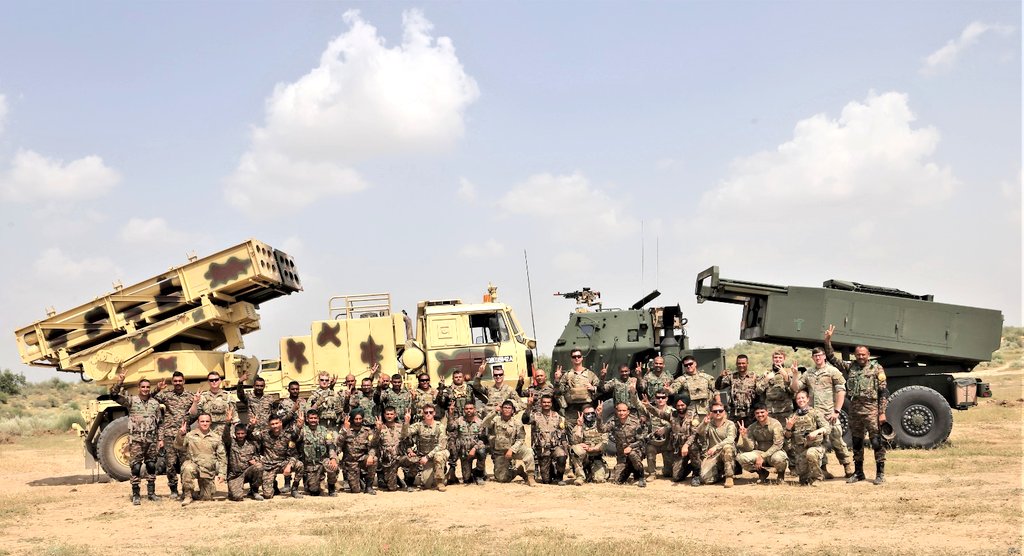
The ongoing joint military exercise, Yudh Abhyas 2024, has provided a platform for the US Army to showcase its advanced weaponry alongside India’s indigenous capabilities. One such demonstration involved the M142 High Mobility Artillery Rocket System (HIMARS) and India’s Pinaka Multiple Barrel Rocket Launcher (MBRL).
HIMARS is a highly mobile missile launcher mounted on a five-tonne truck. It can fire six guided missiles simultaneously, each capable of striking targets with precision. Additionally, HIMARS can launch a single Army Tactical Missile System missile, extending its range to 186 miles (300 km).
Continue readingSOURCE: AFI
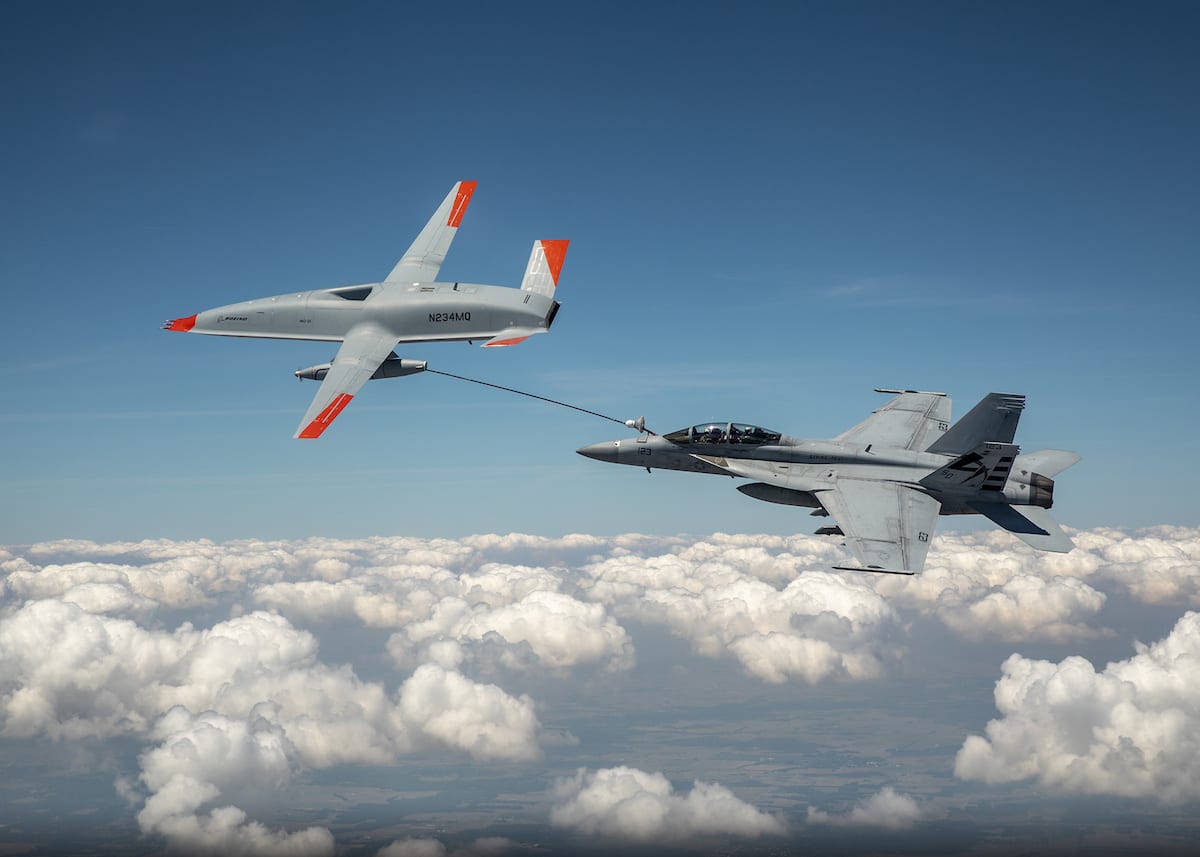
The US Navy has taken a significant step forward with the MQ-25, its unmanned carrier-based refueler, by successfully simulating the Joint Precision Approach Landing System (JPALS). This groundbreaking technology offers “hands-off” navigation and guidance, making it a key capability for unmanned aerial systems (UAS) operating from aircraft carriers. JPALS enables precise and autonomous landings in challenging sea conditions, providing the reliability and safety needed for future unmanned naval operations. As the US Navy pushes the boundaries of naval aviation, this development holds important lessons for other navies, including India’s.
For the Indian Navy, which is rapidly modernizing and seeking to enhance its blue-water capabilities, the success of the MQ-25 and JPALS offers a roadmap to the future of unmanned naval aviation. By adopting and adapting such technologies, India could significantly bolster its naval capabilities. The Indian Navy should seriously consider developing a similar system indigenously in collaboration with the private sector, particularly as the country’s defense ecosystem grows in capability and ambition.
Continue readingSOURCE: AFI

Abhijit Singh, a former naval officer and Senior Fellow heading the Maritime Policy Initiative at the Observer Research Foundation (ORF), recently discussed India’s evolving nuclear posture in his latest column. Singh highlighted the induction of India’s second indigenous nuclear ballistic missile submarine (SSBN), the INS Arighat, and explored the implications of this development for India’s nuclear doctrine. The discussion has brought to light a critical debate: Should India reconsider its No First Use (NFU) policy as strategic competition in the Indian Ocean intensifies?
The induction of INS Arighat marks a significant milestone in India’s strategic capabilities, further strengthening its nuclear triad. However, it also raises questions about the future direction of India’s nuclear policy. As Singh notes, there is an ongoing debate among strategic thinkers and policymakers about whether India should rethink its commitment to the NFU policy, which pledges not to use nuclear weapons unless first attacked by an adversary with nuclear weapons.
Continue reading